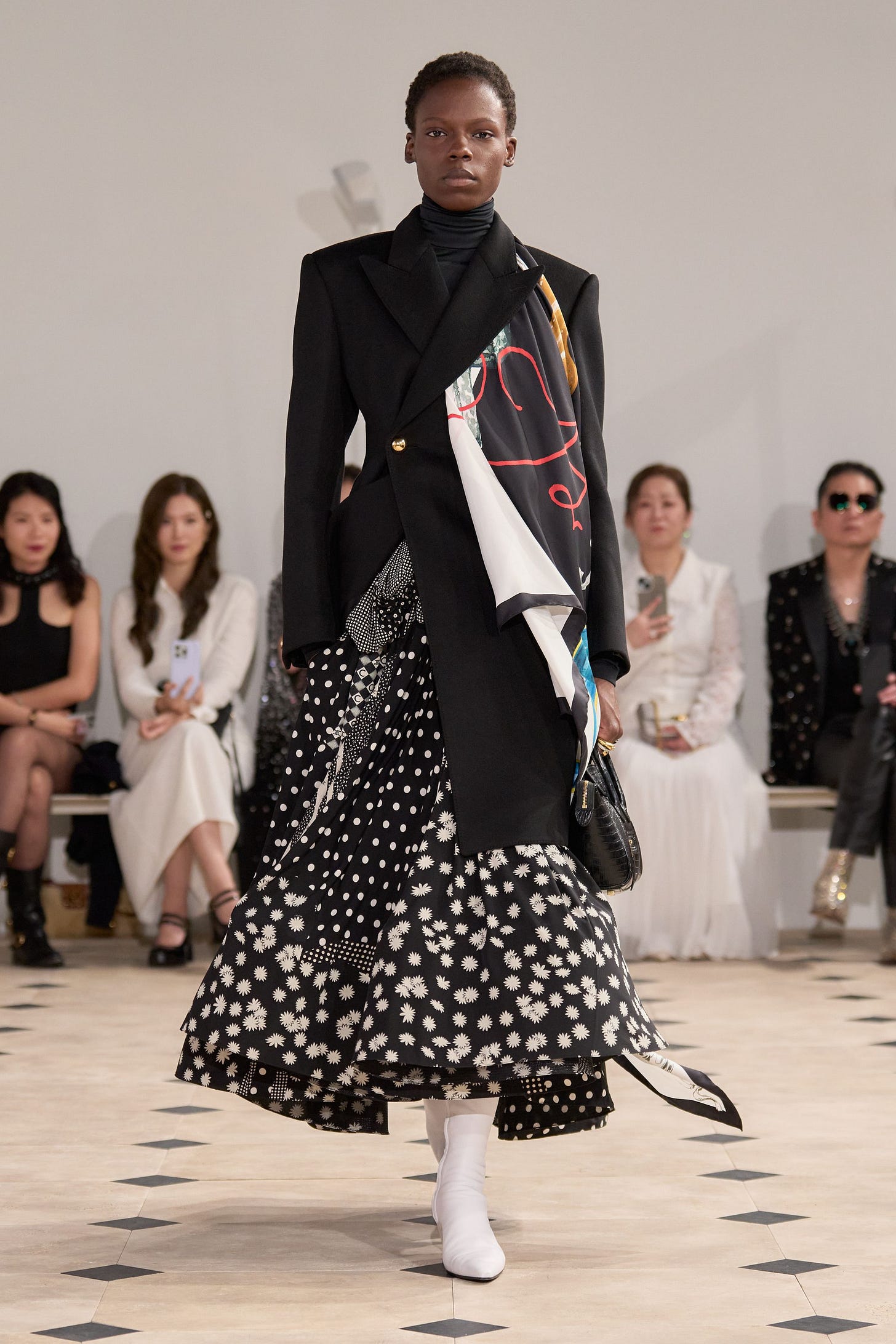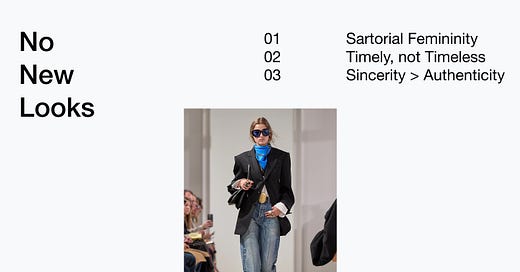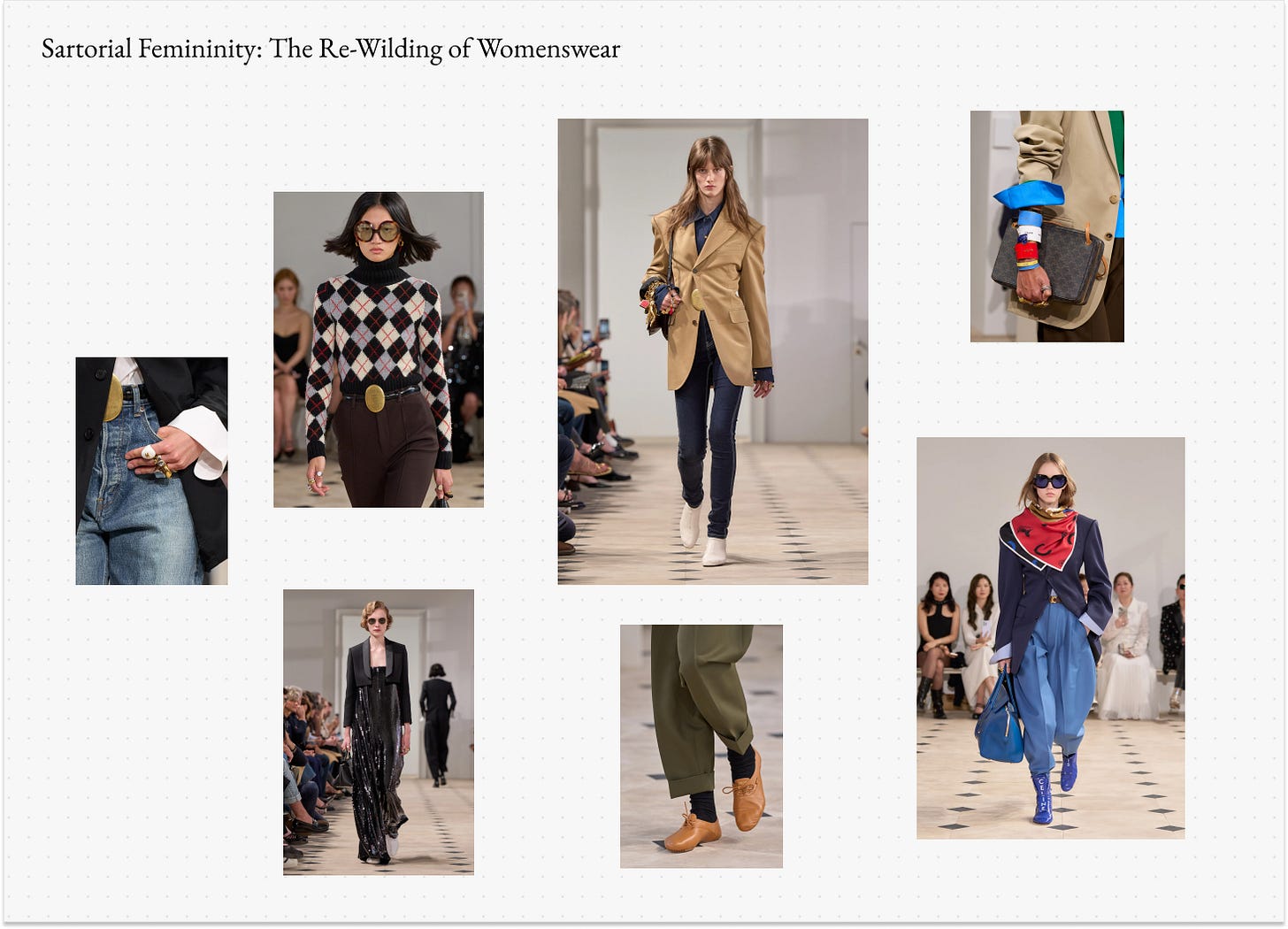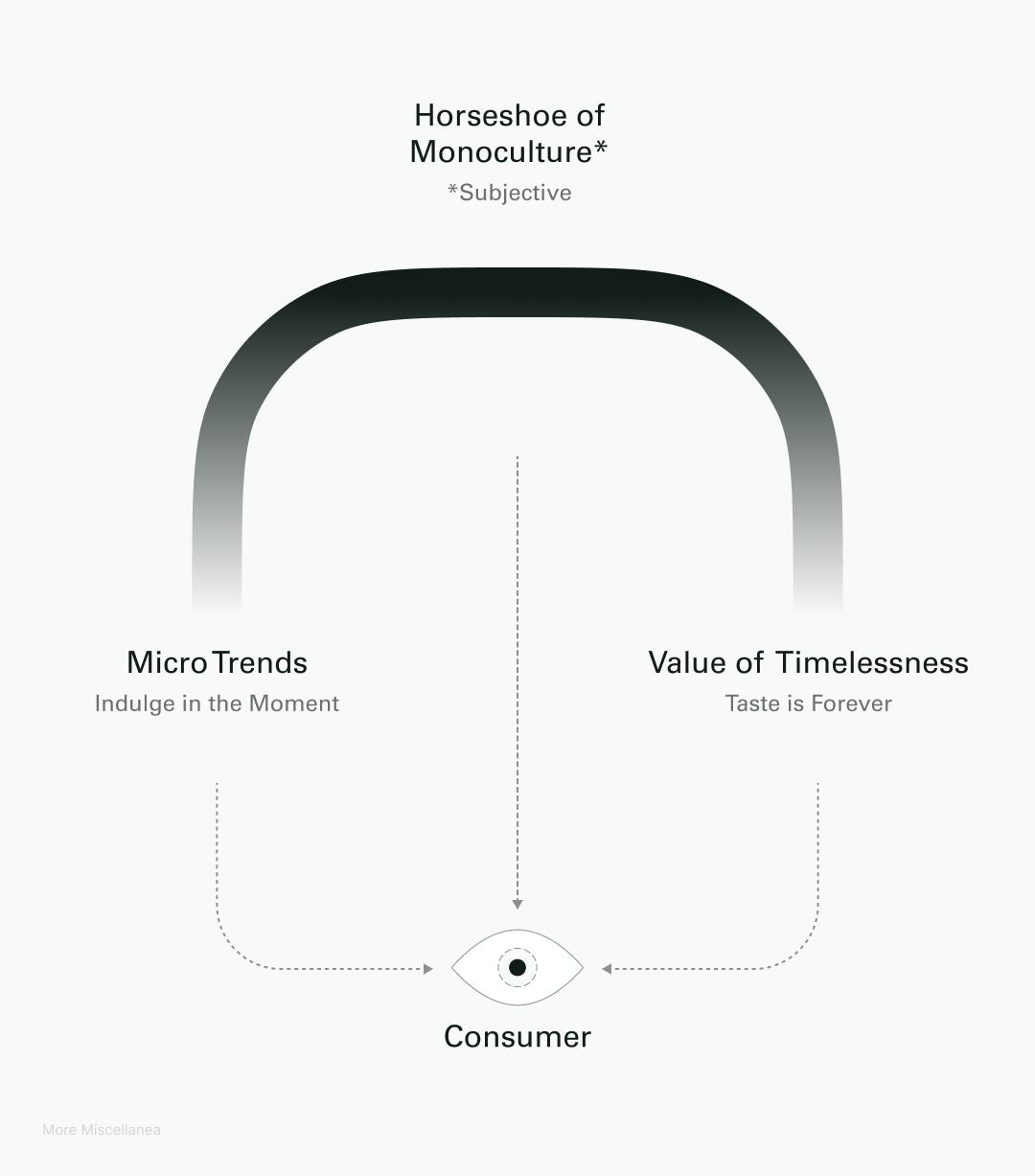No New Looks, Just What's Now: 'Sartorial Femininity' defines Womenswear
Against timelessness and for modernity, Sartorial Femininity is womenswear's coming of age. It offers an IYKYK approach to design that requires explanation, and therefore, piques our interest.
This week I share my working concept around Sartorial Femininity, a commercial, wearable movement in womenswear that is coming to define ready-to-wear womenswear for the 2020s. It's something I have been dwelling on since my work on The Basics, as I questioned how a contemporary casual baseline could evolve to inspire newness and future fashion values, in a system where the use of 'luxury' and 'timeless' have become buzzkills.

Instead, Sartorial Femininity comes to light (or full circle) with the recent debut collection of Michael Rider at Celine (and its somewhat stark contrast to J.W. Anderson's Dior).
Sartorial Femininity (noun): The application of sartorial intelligence to the varied realities of contemporary womanhood, and subsequently, the design approach that recognizes femininity and women's lives as deserving of the same tailored consideration traditionally reserved for menswear.
The use of sartorial femininity is also a way to umbrella the way designers and journalists introduce designs and collections as 'classics with a twist', 're-worked timeless pieces', ‘subverted essentials’ or 'updated icons', etc. The clothing is familiar yet differentiated usually with new proportions, unexpected or hybridized design details, materials, prints and graphics and/or color.



A formulaic approach to newness is not new, and there are significant holes in the idea that creativity can be made up of assigned components. When originality through design is reduced to such a small percentage, the probability of the product being tagged as a fad, gimmick, or singular moment increases. This aligns with
' analysis in their umami theory of value, which identified how the late 2010s experience economy prioritized immediate cultural "yumminess" and paradoxical combinations. As NEMESIS predicted, this approach creates viral moments but raises questions of cultural staying power. This might also be because the idea can be applied more to marketing than design, since value can be post-rationalized after a product is made.Make no mistake: sartorial femininity is not a formulaic approach. Sartorial femininity is not about creating paradox or cultural remixes for immediate consumption. Sartorial femininity is designed to define dress.
We can credit the essence of sartorial femininity to Phoebe Philo, and her work at Céline (2008-2017), from which her design codes still stand: the bringing together of classic tailoring techniques from menswear, the fluid draping and form-fitting details in womenswear, along with an acute attention to the lifestyles - realistic or aspired - of women. Add to the mix concept-driven accessories, footwear, and jewelry that demonstrated study and art - it was the ultimate balance between sartorial sensibilities and an effortless femininity. Almost every mainstream brand - across contemporary, mass, and fast fashion brands - still try to emulate this strategic approach to sartorial details, often failing due to a lack of balance between newness and classics, falling into reference-mania rather than originality.

More importantly, the fashion - or clothing - presented appears to be wearable, the preferred stamp of approval by Anna Wintour during show seasons.
As reductive as it might seem to say wearability is important, it's not just out of practicality, it's inherently political. Sartorial femininity exists to dress women who exist amongst men, where fashion can’t be fussy - it has to be smart. Philo's take on bags, for example, also demonstrated this, when her simple leather totes and top-handle bags entered a market and workplace of bulky briefcases and polyester laptop bags.
Philo's Celine presented womenswear as a result of logic. Though mostly reported as minimalist at the time, in hindsight it was simple modernity, as there is a certain industriousness when clothing is designed to speak to both desirable form and function, like a paneled blouse or a shift dress with pockets, and much, much more.
Fashion design in womenswear has shifted from a top-down impact from directional fashion visionaries to logic-based design that is built bottom-up from market analysis. The latter of which understands femininity as a result of our cultural contexts, intrinsic to style archetypes, and lifestyles. That's why boho never died, and Cottagecore was never new. It was simply reintroduced to a new generation.
The problem now is that many brands have over-indexed in minimalism, stuck between listening to consumers loudly desire to be "Quiet Luxury" and the reality that there's only so many versions of a blazer one can buy.
In a way, Susan Sontag's idea that camp is an appreciation of failed seriousness is something to note. ("Notes on 'Camp'" from Against Interpretation and Other Essays, 1966) This applies directly to understanding Sartorial Femininity. Phoebe Philo and Michael Rider's Celine feels intentionally cheeky, a little novel, and well, camp — skinny jeans, prep details, and those ankle booties that expose (and chafe) the area of our feet I call the Foot Shoulders (ha!). This camp element is what prevents sartorial femininity from feeling or looking like plain minimalism or a mish-mash of nostalgic design references.

Notes of camp are needed to feel contemporary and align with contemporary culture and humor. To be camp, or camp design is not a micro-trend. The opposite of a micro-trend is not timeless fashion, and timeless fashion is not a form of luxury or necessarily minimalist. The opposite of timelessness might be modernity.
Fear of being trend-trapped drives brands to chase timelessness over contemporary relevance. This approach forces generalizations in the design process, further adding to our monoculture.
True modernity means dressing for your current life or designing for now-ness, not some fantasy of permanence, a frame of thought that seems, well, unnecessary and a little self-indulgent.
There is no culture of timelessness or of being timeless.
The cost of chasing timelessness is a lack of character, and maybe even identity.
The ending of The Cut's article on The Row 'Beige Ambition' from 2021 is a staunch illustration of what I mean.
“But when we return from the pandemic — whenever that may be — will The Row’s slate and oatmeal flavors, now imported from Italy, still make sense in a world hungry for joy? It is built to be timeless. Christina Griffey, a Row client from Nashville, told me that, in fact, she’s been stocking up. “It doesn’t matter if I don’t get out till 2023,” she said. “Nobody’s gonna know.”
Who wouldn’t want to stop the clock on timeless chic? But sand still passes through the hourglass, even in the perfect sweater. “My mom, aunt, and I all share pieces from The Row,” one younger client told me dreamily. It was intended as a compliment. But all the same, she added, “Maybe I will regret when I’m actually 60 that I was wearing it at 34. Actually, I’m sure I will. Why was I dressed like a 60-year-old?””
Beige is still good business. However, mainstream fashion’s settlement in a commercial safety, driven by the need to scale rather than retain loyalty, means less invention and more reliance on styling and merchandising to maintain interest. It becomes a façade.
In this time of endless options and brands wanting to be both arbiters of and a part of culture, womenswear consumers are increasingly drawn to presentations of consideration that implies a different type of thoughtfulness and care.
It's more of a consideration of lifestyle and clothing, over visions, illusions, or even delusions of fashion ideals, which is why sartorial femininity will be the default for womenswear for the foreseeable future. Notes of camp will come from injections of sportswear, prep, and utilitarian workwear as designers look to the left of center to shift femininity with our values and lifestyle interests. Maybe I’ll map this out in a couple of weeks…
✳︎ Closing Thoughts – Against Timelessness, For Modernity:
If authenticity no longer exists, originality is too expensive, and sincerity is easy to question, sartorial femininity is the default we've been working toward. This isn't a trend forecast—it's an acknowledgment of what's already happened, and still happening.
All billing for paid subscribers have been paused until August, or at the very least, until I hit 'post' on my backlog of work and get on top of my Substack practice. Thanks for your continued support and patience. Would love to hear from you, feel free to reach out.








